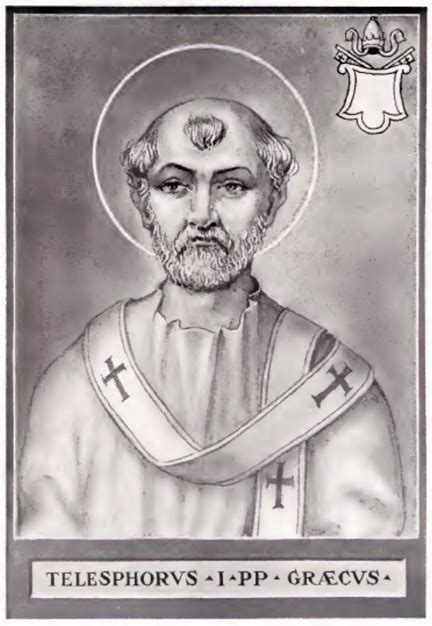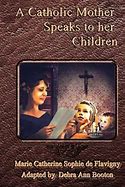
St. Telesphorus was a man of Greek origin, born, according to legend, in Terranova de Sibari, in Calabria around 67 AD. Calabria is the “toe” of the “boot” of Italy. His name, translated from the Greek, means “accomplishing the goal”. He is said to have served as bishop of Rome from the twelfth year of the reign of Hadrian (128-129) to the first year of Antonius Pius (138-139).
This saint was a monk, or an anchorite, living almost as a hermit somewhere near but outside his hometown. He developed an affinity to staying alone. But, as most Christians, he was called to help his brethren. His experiences had made him intelligent and disciplined. The Carmelites claim him as their patron because legend says he was a hermit on Mount Carmel before his papacy.
When he was ready to dedicate himself to the Church, he moved to Rome, the epicenter of thought.
In the first century and a half, no definitive dogma of Christianity was predominant. That Jesus died and rose was debated, along with His divinity and what the consecration intended. Docetism, one of the first doctrines countering the apostolic teachings, claimed that Jesus’ physical appearance was just an illusion. Such a teaching showed up soon after the Ascension. This explains, in part, why many of the gospel stories talk about Jesus eating and drinking after His Resurrection. However, the biggest problem was the argument that if Jesus did not have a physical body, then he could not have actually suffered and died for our sins, negating one of the first teachings of the Church. Some early gnostics claimed to “know”, through an internal reading of the heart or a mystical appearance of the Holy Spirit, how soon Jesus would come back, when the apocalypse would show, which books in the New Testament should be seen as valid. They tended to believe that the Old Testament was not representative of true belief, or the true God.
This was the environment in Rome when Telesphorus arrived. He spent his next years fighting these heresies.
In addition to these heresies attacking a still infant belief, the early Christians needed to separate themselves further from their Jewish brothers. A series of rebellions in the eastern frontiers of the Roman Empire had angered Emperor Hadrian. His wrath against the Jewish leaders made the sack of Jerusalem in 70AD look small. Whether correct or not, the Christian leaders chose to define the differences between themselves and the Jews on a number of matters, including making Sunday the Sabbath and moving Easter away from a weekday Passover to the Sunday near Passover. Those in the western part of the Empire were more willing to accept these changes than those in the eastern part. Telesphorus was willing to accept these differences during his time as bishop and remain in communion with the eastern bishops.
In addition, Telesphorus is said to have established Lent as being seven weeks in length. Most historians suggest that the time before Easter was celebrated as a time of fast and abstinence, but of various lengths of time. He may have codified the length of time.
Telesphorus is said to have begun the tradition of midnight Mass at Christmas, although the first celebration is not mentioned until Clement of Alexandria in about 200. He is also said to have started the singing of the Gloria at that Mass.
Ireneus, writing at the end of that century, claims that Telesphorus died “a glorious martyrdom”, indicating a true martyrdom, not simply harassment or troubles. It is believed that he died on January 5, 136, because that is the day that Pope Hyginus was raised to the chair of Peter.

https://www.amazon.com/Catholic-Mother-Speaks-Her-Children/dp/0983975809/ref=sr_1_5?dchild=1&keywords=A+Catholic+Mother+Speaks+to+her+children&qid=1608425392&sr=8-5

Recent Comments